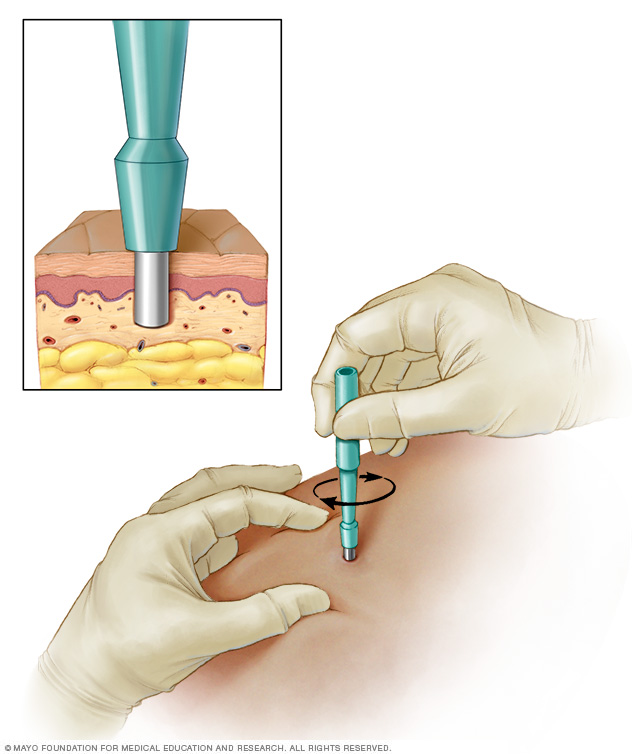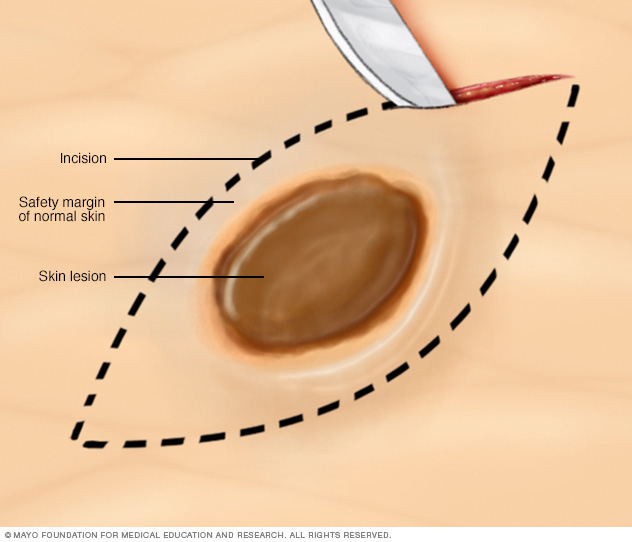Cutaneous T-cell lymphoma
![]() April, 3rd, 2025
April, 3rd, 2025
Benefit Summary
Learn about this type of non-Hodgkin lymphoma that attacks the skin. Find out about symptoms, diagnosis and treatments.
Overview
, Overview, ,
Cutaneous T-cell lymphoma is a rare type of cancer that begins in the white blood cells. The cancer affects white blood cells called T cells, also called T lymphocytes. These cells help the body’s germ-fighting immune system. In cutaneous T-cell lymphoma, the T cells attack the skin.
Cutaneous T-cell lymphoma, also called CTCL, can cause rash and slightly raised or scaly round patches on the skin. Sometimes other growths appear on the skin.
There are several types of cutaneous T-cell lymphoma. The most common types include:
- Mycosis fungoides. Mycosis fungoides is the most common type of cutaneous T-cell lymphoma. It grows slowly. Mycosis fungoides mainly affects the skin. It often causes patches of affected skin.
- Sezary syndrome. Sezary syndrome is a less common type of cutaneous T-cell lymphoma. It grows and expands quickly. Sezary syndrome affects the skin and the blood. In time, it causes a rash over the whole body.
Treatment depends on the type of cutaneous T-cell lymphoma. Treatments can include skin creams, light therapy, radiation therapy and chemotherapy.
Cutaneous T-cell lymphoma is a type of non-Hodgkin lymphoma. Another type of non-Hodgkin lymphoma that affects the skin is called cutaneous B-cell lymphoma. Cutaneous T-cell lymphoma is much more common than cutaneous B-cell lymphoma.
Symptoms
Signs and symptoms of cutaneous T-cell lymphoma include:
- Patches of raised or scaly skin that might itch. The patches happen most often on skin that doesn’t get much sun.
- Patches of skin that look pink, red, brown or gray. The color may be harder to see on Black and brown skin.
- Patches of skin that look lighter in color than the skin around them. This may be easier to see on Black and brown skin.
- Lumps that form on the skin and may break open.
- Lymph nodes that get bigger.
- Hair loss.
- Thickened skin on the palms of the hands and soles of the feet.
- A rash over all the skin that is scaly and itchy.
When to see a doctor
Make an appointment with a healthcare professional if you have symptoms that worry you.
Causes
The cause of cutaneous T-cell lymphoma often isn’t known. This cancer causes a growth of cells in the skin. It starts in germ-fighting white blood cells called lymphocytes. Cutaneous T-cell lymphoma affects specific lymphocytes called T lymphocytes.
Cutaneous T-cell lymphoma happens when T lymphocytes develop changes in their DNA. A cell’s DNA holds the instructions that tell the cell what to do.
DNA gives healthy cells instructions to grow and multiply at a set rate. The instructions tell the cells to die at a set time. In cancer cells, the DNA changes give other instructions. The changes tell the cancer cells to grow and multiply quickly. Cancer cells can keep living when healthy cells would die. This causes too many cells.
In cutaneous T-cell lymphoma, the cancer cells build up in the skin. In one type of cutaneous T-cell lymphoma called Sezary syndrome, the cancer cells also are in the blood.
Risk factors
The risk of cutaneous T-cell lymphoma may be higher in:
- Older adults. The condition can happen at any age, but it’s more common in people 50 and older.
- People assigned male at birth. The condition is twice as common in people assigned male at birth than it is in people assigned female at birth.
- Black people. Black people have the highest risk of getting cutaneous T-cell lymphoma. Black people also are more likely to get this cancer at an earlier age.
There is no way to prevent cutaneous T-cell lymphoma.
Diagnosis
To diagnose cutaneous T-cell lymphoma, a healthcare professional might start with an exam to look for signs of cancer. Tests and procedures might include blood tests, skin biopsies and imaging tests. Cutaneous T-cell lymphoma may be hard to diagnose because the symptoms are like those of other skin conditions, such as eczema. And early tests may not show cancer cells in the skin. Getting the right diagnosis may take time.
Physical exam
A healthcare professional may do a physical exam to look over your skin for scaly areas or growths. The healthcare professional may check for other signs of cutaneous T-cell lymphoma, such as swollen lymph nodes.
Blood tests
Blood tests such as a complete blood count can give information about your condition. Sometimes blood tests show cancer cells in the blood. This is more common with one type of cutaneous T-cell lymphoma called Sezary syndrome.
Skin biopsy
A skin biopsy is a procedure to remove cells from the surface of the body so that they can be tested in a lab. The tests can show whether cancer cells are present in the skin.
A healthcare professional might take the sample of cells with a circular cutting tool. This type of biopsy is called a punch biopsy. For larger areas and growths, the healthcare professional might use a small knife. This is called an excisional biopsy.
Skin biopsies don’t always detect cancer cells, even when cancer is present. You might need more than one skin biopsy over time.
Imaging tests
If there’s concern that the cancer cells have spread to other parts of the body, your healthcare professional might suggest imaging tests. These might include a computerized tomography scan, also called a CT scan, or a positron emission tomography scan, also called a PET scan.

During a punch biopsy, a round-tipped cutting tool is used to remove deeper layers of skin for testing. Depending on the size, stitches may be needed to close the wound.

During an excisional biopsy, a scalpel is used to cut out a lump or an area of irregular skin and some surrounding healthy skin. As a rule, stitches are needed to close the wound.
Excisional biopsy Treatment
Treatments for cutaneous T-cell lymphoma include medicines, radiation therapy, light therapy and bone marrow transplant. Many treatments exist for this cancer. Your treatment plan may include a mix of treatments.
Skin creams and ointments
Some medicines for cutaneous T-cell lymphoma are applied to the skin. The medicines may come in creams, gels and ointments.
Medicines used in this way include:
- Steroid medicines. Steroid medicines put on the skin can help control rash and itchiness.
- Chemotherapy medicines. Chemotherapy treats cancer with strong medicines. Some chemotherapy medicines are put on the skin to kill the cancer cells.
Light therapy
Light therapy for cutaneous T-cell lymphoma involves shining a certain kind of light on the skin to kill the cancer cells. During this treatment, you stand in a treatment area while lamps shine on your skin. The treatment often is given a few times a week for several weeks.
Sometimes light therapy also uses medicine to make the cancer cells easier to hurt with the light. This is called photodynamic therapy.
Radiation therapy
Radiation therapy treats cancer with powerful energy beams. For cutaneous T-cell lymphoma, the energy beams are most often X-rays or electrons. The treatment might target a small area of cancer on the skin. Or it can be given to all the skin on the body.
Medicines in pill form or through a vein
Some medicines for cutaneous T-cell lymphoma are given in pill form or through a vein. Giving the medicine this way means it travels through the body and can treat the cancer wherever it is growing.
Medicines used in this way include:
- Chemotherapy. Chemotherapy treats cancer with strong medicines. The medicines kill the cancer cells.
- Targeted therapy. Targeted therapy for cancer is a treatment that uses medicines that attack specific chemicals in the cancer cells. By blocking these chemicals, targeted treatments can cause cancer cells to die.
- Immunotherapy. Immunotherapy for cancer is a treatment with medicine that helps the body’s immune system kill cancer cells. The immune system fights off diseases by attacking germs and other cells that shouldn’t be in the body. Cancer cells survive by hiding from the immune system. Immunotherapy helps the immune system cells find and kill the cancer cells.
Bone marrow transplant
A bone marrow transplant, also called a bone marrow stem cell transplant, involves putting healthy bone marrow stem cells into the body. These cells replace cells hurt by chemotherapy and other treatments. A bone marrow transplant might be used when cutaneous T-cell lymphoma is far along or comes back after other treatments.
Lifestyle and home remedies
Many people with cutaneous T-cell lymphoma have itchy skin. Caring for your skin may help. Besides what your healthcare professional gives you to control itching, it also may help to:
- Use mild soap with no scent. This might help ease itching. When you wash your skin, use warm, not hot, water.
- Keep skin moisturized. Put a gentle lotion, cream or ointment with no scent on your skin after showers and baths. Use the moisturizer throughout the day as needed. This can help ease itching.
Coping and support
A diagnosis of cutaneous T-cell lymphoma can be a challenge. Here are some ideas that may help you cope.
Learn about cutaneous T-cell lymphoma
Learn enough about your cancer to feel OK making decisions about your treatment and care. Talk with your healthcare team. Ask your care team to recommend good sources to use for more information. The U.S. National Cancer Institute and the Leukemia & Lymphoma Society are two good sources.
Find a good listener
Finding someone who is willing to listen to you talk about your hopes and fears can be helpful as you manage a cancer diagnosis. This could be a friend or family member. A counselor, medical social worker or clergy member also may offer helpful guidance and care.
It also may help to join a support group or talk with others who have cancer.
Preparing for an appointment
Start by making an appointment with a doctor or other healthcare professional if you have symptoms that worry you.
Here’s some information to help you get ready for your appointment.
What you can do
When you make the appointment, ask if there’s anything you need to do before you go. For example, you may be told not to eat before you have a certain test. Make a list of:
- Your symptoms, including any that don’t seem related to the reason for your appointment, and when they began.
- Key personal information, including major stresses, recent life changes and family medical history.
- All medicines, vitamins and other supplements you take, including dosages.
- Questions to ask your healthcare professional.
Bring a family member or friend with you, if possible, to help you remember the information you’re given.
For cutaneous T-cell lymphoma, some basic questions to ask include:
- What’s likely causing my symptoms?
- Other than the most likely cause, what are other possible causes for my symptoms?
- What tests do I need?
- What’s the best course of action?
- I have other health conditions. How can I best manage them together?
- Are there restrictions I need to follow?
- Should I see a specialist?
- Are there brochures or other printed material I can have? What websites do you suggest?
Be sure to ask all the questions you have.
What to expect from your doctor
Your healthcare professional may ask you questions, such as:
- Do you have symptoms all the time or do they come and go?
- How bad are your symptoms?
- What, if anything, seems to make your symptoms better?
- What, if anything, seems to make your symptoms worse?
© 1998-2025 Mayo Foundation for Medical Education and Research (MFMER). All rights reserved. Terms of Use



